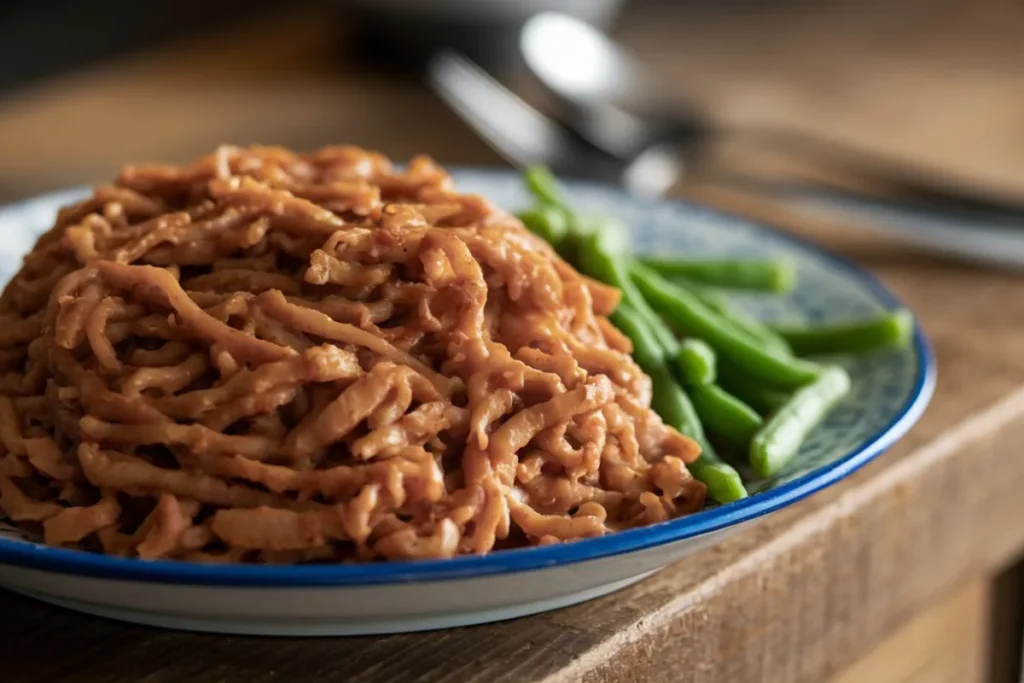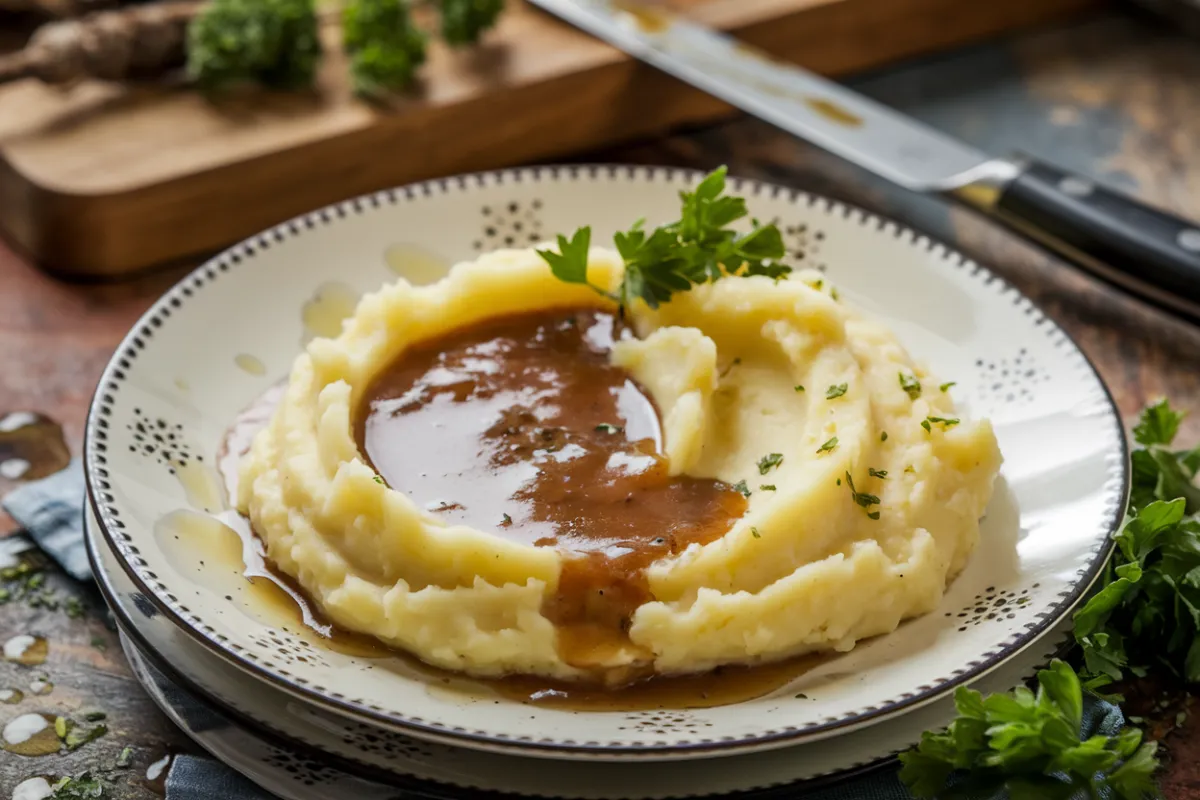Introduction to Fideo
Fideo is a popular staple in Mexican cuisine. This dish, known for its simplicity, often features thin pasta noodles cooked in a savory tomato-based broth with vegetables and spices. For many, fideo is more than just a meal—it’s a connection to cultural heritage and family traditions. However, the question often arises: is fideo good for you?
In this article, we will explore the nutritional profile, health benefits, potential drawbacks, and cultural significance of fideo. We will also discuss how to customize it for different dietary needs. This will help answer whether this beloved dish can be part of a healthy lifestyle.
What is Fideo?
Fideo is a type of thin pasta made from wheat flour and water. In Mexico, people often prepare it as a soup called Sopa de Fideo. This dish involves simmering pasta in a tomato-based broth seasoned with onions, garlic, and spices. It’s typically light yet flavorful, enjoyed as a starter or a main dish. Many cultures have their own versions of fideo, each with its unique twist.
You can add various ingredients to make fideo suit different tastes and dietary needs. To determine whether fideo is a healthy choice, we need to examine its nutritional components.
Nutritional Breakdown of Fideo
The nutritional value of fideo depends on the ingredients used. Here’s a basic overview:
- Calories and Macronutrients: A serving of Sopa de Fideo usually has around 100-150 calories. Most of these calories come from carbohydrates, which provide energy. It also has a moderate amount of protein—about 5-8 grams per serving—especially when made with whole wheat noodles or protein sources like beans or chicken. The fat content is low, especially if you cook it with little oil or healthy fats like olive oil or avocado.
- Vitamins and Minerals: Fideo contains several essential vitamins and minerals. Whole-grain noodles provide vitamin B6, magnesium, and iron, all important for energy, red blood cell formation, and immune function. Adding vegetables like tomatoes, onions, and bell peppers boosts vitamin C, potassium, and fiber.
- Fiber Content: The fiber content in fideo can vary, but using whole wheat noodles and including vegetables can increase its fiber. A high-fiber diet supports digestive health by preventing constipation and promoting regular bowel movements. According to the Mayo Clinic, fiber reduces heart disease risk and helps with weight management.
- Healthy Fats: Fideo doesn’t naturally contain much fat, but the type of fat used in preparation can affect its health benefits. Adding olive oil introduces monounsaturated fats, which are good for the heart. These fats help the body absorb vitamins and support brain function.
These nutrients make fideo a great addition to a balanced diet. But what specific health benefits does it offer?
Health Benefits of Eating Fideo
There are several reasons why fideo can be a nutritious choice:
- Supports Weight Management: Because it is low in calories and high in fiber, fideo can help with weight management. Fiber-rich foods like whole wheat fideo noodles keep you feeling full longer, reducing the urge to snack between meals.
- Boosts Digestive Health: The fiber in fideo, especially with whole grains and vegetables, supports digestive health. It not only prevents constipation but also encourages the growth of good bacteria in the gut.
- Promotes Heart Health: Whole grains in fideo noodles provide heart-healthy nutrients. The fiber and antioxidants in these grains can lower cholesterol, reduce blood pressure, and decrease heart disease risk. Ingredients like olive oil and vegetables rich in potassium further support heart health.
- Enhances Immune Function: Common fideo ingredients like garlic, onions, and tomatoes help boost the immune system. Garlic, for example, has antibacterial and antiviral properties that help the body fight infections.
- Provides Sustained Energy: The mix of carbohydrates and protein in fideo offers steady energy throughout the day. Whole grain pasta provides a gradual energy release, avoiding the spikes and drops in blood sugar caused by refined carbs.
Potential Drawbacks or Considerations
While fideo offers many benefits, it has some potential drawbacks:
- Portion Control: Even though fideo is low in calories, large portions can still lead to weight gain. Keeping portions moderate helps maintain its health benefits.
- Ingredients Selection: The healthiness of fideo depends on the ingredients. Using high-sodium broths or unhealthy fats can reduce some benefits. Choosing low-sodium broths, whole wheat noodles, and healthy fats like olive oil or avocado makes fideo a healthier option.
- Allergy Concerns: Fideo is usually made from wheat flour, which may not suit those with gluten sensitivity or celiac disease. Fortunately, gluten-free noodles are available and can be used instead.
How to Make Fideo Healthier

To maximize the benefits of fideo, consider these tips:
- Use Whole Wheat or Gluten-Free Noodles: Whole wheat noodles add fiber and nutrients. Gluten-free options are also available for those with gluten sensitivity.
- Add More Vegetables: Include vegetables like spinach, zucchini, bell peppers, and tomatoes. They enhance flavor and increase the dish’s nutritional value.
- Opt for Low-Sodium Broths: Choose homemade or low-sodium broths to reduce salt intake and maintain healthy blood pressure.
According to Healthline, whole wheat pasta, like the type used in a healthier fideo, can help lower cholesterol and improve heart health.
Part 2: Cultural Significance, Customization, and Frequently Asked Questions
Cultural Significance of Fideo
Fideo is a cherished part of Mexican cuisine, often served at family gatherings, holidays, and communal meals. It brings people together, symbolizing warmth, comfort, and tradition. The dish’s origins in Mexican cooking trace back to Spanish colonization, where it was adapted using local ingredients and techniques.
Different regions in Mexico have unique versions of fideo. In Northern Mexico, the dish might include a meat-based broth, while in Central Mexico, it is often made with a tomato base and fresh vegetables. This diversity reflects fideo’s deep cultural roots and versatility.
Variations of fideo exist in other cultures as well. In Spain, a dish called fideuà uses a different type of noodle and often pairs with seafood. This adaptability shows the universal appeal of noodle-based dishes.
How to Customize Your Fideo
One of fideo’s greatest strengths is its adaptability. Here are some ways to tailor the dish to your needs:
- Add Vegetables: Boost the nutritional profile with zucchini, carrots, bell peppers, spinach, or kale.
- Choose Your Protein: Add chicken, turkey, beef, shrimp, or tofu for extra protein. Vegetarian options like beans, lentils, or chickpeas also work well.
- Spice it Up: Use spices like cumin, paprika, chili powder, or cayenne pepper to enhance the flavor. Fresh herbs like cilantro, parsley, or basil add a refreshing touch.
- Garnish Creatively: Finish with fresh cilantro, avocado slices, crumbled cheese, or a squeeze of lime juice. These garnishes can improve both flavor and presentation.
Fideo in Different Diets
Fideo can be adapted for many dietary needs:
- Vegan and Vegetarian Options: Use plant-based proteins like beans, tofu, or tempeh. Choose vegetable broth instead of chicken or beef broth.
- Gluten-Free Adaptations: Replace traditional noodles with gluten-free varieties made from rice, quinoa, or chickpea flour. These alternatives provide a similar texture and suit those with gluten intolerance.
- Low-Carb Variants: Use low-carb noodles made from spiralized vegetables like zucchini or shirataki to reduce carbohydrates while keeping the flavor.
FAQs Section
Here are some common questions about fideo:
- What is Sopa de Fideo?
Sopa de Fideo is a traditional Mexican soup made with thin pasta noodles cooked in a tomato-based broth. It is often flavored with onions, garlic, and spices, creating a simple yet delicious dish. - Is Fideo healthy?
Yes, fideo can be healthy. It is low in fat and cholesterol and provides essential nutrients like vitamins, minerals, and fiber. However, the ingredients used and portion sizes affect its overall healthiness. - Can I customize my Fideo?
Absolutely! You can adjust fideo to fit your tastes. Add vegetables, different proteins like chicken or beef, or toppings like cheese, avocado, or cilantro. - How do I cook Sopa de Fideo?
To make Sopa de Fideo, sauté chopped onions and garlic in a pot. Add the noodles and cook until they are slightly golden. Pour in a tomato-based broth with spices or seasonings. Simmer until the noodles are cooked and flavors meld together. Serve hot and enjoy! - Is Fideo good for weight loss?
Yes, fideo supports weight loss with its low-calorie content and high fiber, which helps you feel full longer and reduces snacking. - Can Fideo be made gluten-free?
Yes, by using gluten-free noodles and broth, you can create a tasty gluten-free version of fideo. - What are the best sides to serve with Fideo?
Fideo goes well with sides like fresh green salad, grilled vegetables, or a light avocado salad.
Conclusion
Fideo is more than just a simple dish—it can be a nutritious addition to your diet. It is rich in essential vitamins, minerals, fiber, and healthy fats. Fideo can support weight management, digestive health, and immune function. Its flexibility allows countless variations, making it suitable for various dietary preferences, from vegan to gluten-free.
By choosing the right ingredients—like whole wheat or gluten-free noodles, more vegetables, and low-sodium broths—you can make fideo even healthier. Whether enjoyed as a hearty main course or a light starter, this dish offers a delightful mix of flavors and nutrients that can complement any balanced diet.
So, the next time you want a healthy, customizable meal, consider trying fideo. Its rich cultural heritage and versatility make it a fantastic option in your kitchen.

